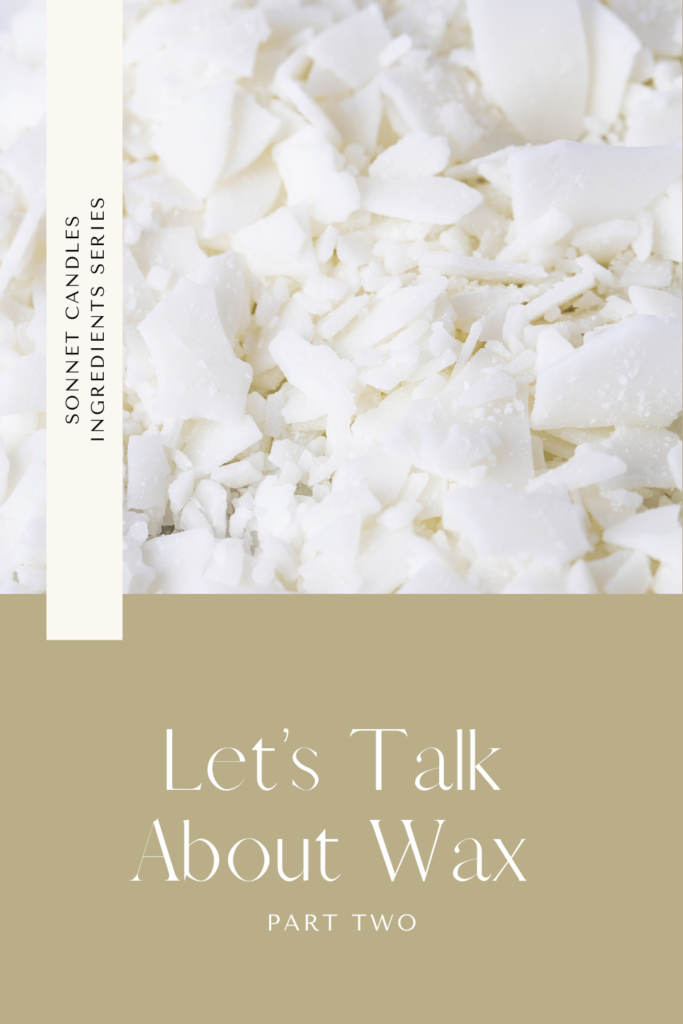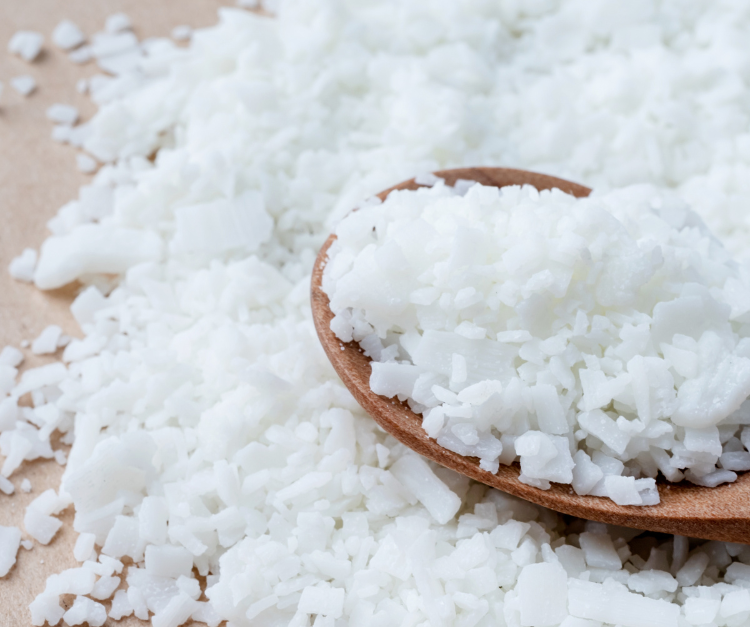
The last ingredient post we talked about a variety of candle waxes but there are more waxes to talk about. In part two of the Let’s Talk About Wax post is all about wax blends. The blend I use is coconut soy. After testing A LOT of waxes when I got serious about starting Sonnet, I settled on this blend because of the features and benefits. But before I talk too much about coconut-soy wax let’s look at all the various wax blends currently being used.
A large number of candle makers will use a single wax type like soy, paraffin or even beeswax but wax blends can enhance waxes to give all of these solo waxes additional advantages in scent throw, burn quality and even cost. Here’s a breakdown of well known wax blends.
#1 Soy – Paraffin Blend
Soy-paraffin blends combine soy wax with paraffin wax. This blend is popular among both hobbyist, small business candle makers and big retail stores that make candles.
Benefits
- Scent Throw – paraffin helps boost the scent throw in this blend
- Better Burn Time – soy wax extends the burn time in this blend so that candles can last longer
- Smooth Finish – creates a smooth finish
- Cost Effective – reduce the cost compared to the cost of pure soy wax
Disadvantages
- Environmental Concerns because paraffin is a petroleum by product
- Potential Allergies could cause reactions for some people
#2 Soy – Coconut Blend
This a blend that merges the renewable properties of soy wax with the great performance of coconut wax. This is the blend that I used and what I love about this blend is that it has a clean burn and holds fragrance really well. Here are some additional features.
Benefits
- Eco Friendly – soy and coconut waxes are natural and renewable
- Great Scent Throw – because of the coconut wax in this blend, it is great at enhancing the fragrance throw.
- Great Texture – candles have an aesthetically pleasing finish.
- Clean Burn – because of the minimal amount of soot that’s produced it results in a cleaner burn.
Disadvantages
- High Cost – this wax blend is more expensive because of the combination of these two waxes that on their own can cost more than paraffin.
#3 Paraffin – Coconut Blend
This blend combines cost-effective paraffin with the clean burning qualities of coconut wax.
Benefits
- Great Scent Throw – the paraffin wax enhances the fragrance
- Cleaner burn – because of the coconut wax in this blend
- Smooth finish to the candles tops with a creamy texture
- Cost Efficient this blend is more affordable than pure coconut wax which can be more expensive
Drawbacks
- Environmental Concerns because of the paraffin that isn’t eco friendly
- Allergy Potential since some may have a sensitivity to paraffin
#4 Coco Apricot Wax
Coconut Apricot wax is a natural wax blend made of coconut and apricot kernel oil and a small percentage of paraffin. This wax has a lower melting point and has become a popular wax by a lot of candlemakers because it is easy to work with.
Benefits
- Fantastic Scent Throw – Coconut apricot wax is known for its excellent scent throw, both cold and hot.
- Easy to Work With – The lower melting point of coconut apricot wax makes it easier to melt and pour, providing greater flexibility in the candle-making process.
Disadvantages
- High Cost
- Limited availability
Wax blends are versatile and practical solution for any candle makers selecting a wax to use for their candles. The combination of these different waxes can create candles that burn longer, smell better, and look more appealing. Whether you prioritize cost, environmental impact, or scent throw, there’s a wax blend to meet your needs. Experimenting with these blends can help you better understand the types of waxes that the candles you buy are made of. If you have a question about a wax or about candle ingredients in general, leave me a comment and I’ll reply back with an answer.



